Fengchun Zhang
FedSSG: Expectation-Gated and History-Aware Drift Alignment for Federated Learning
Sep 17, 2025Abstract:Non-IID data and partial participation induce client drift and inconsistent local optima in federated learning, causing unstable convergence and accuracy loss. We present FedSSG, a stochastic sampling-guided, history-aware drift alignment method. FedSSG maintains a per-client drift memory that accumulates local model differences as a lightweight sketch of historical gradients; crucially, it gates both the memory update and the local alignment term by a smooth function of the observed/expected participation ratio (a phase-by-expectation signal derived from the server sampler). This statistically grounded gate stays weak and smooth when sampling noise dominates early, then strengthens once participation statistics stabilize, contracting the local-global gap without extra communication. Across CIFAR-10/100 with 100/500 clients and 2-15 percent participation, FedSSG consistently outperforms strong drift-aware baselines and accelerates convergence; on our benchmarks it improves test accuracy by up to a few points (e.g., about +0.9 on CIFAR-10 and about +2.7 on CIFAR-100 on average over the top-2 baseline) and yields about 4.5x faster target-accuracy convergence on average. The method adds only O(d) client memory and a constant-time gate, and degrades gracefully to a mild regularizer under near-IID or uniform sampling. FedSSG shows that sampling statistics can be turned into a principled, history-aware phase control to stabilize and speed up federated training.
Mid-band Propagation Measurements in Industrial Environments
Mar 13, 2025Abstract:6G radio access architecture is envisioned to contain a network of short-range in-X subnetworks with enhanced capabilities to provide efficient and reliable wireless connectivity. Short-range communications in industrial environments are actively researched at the so-called mid-bands or FR3, e.g., in the EU SNS JU 6G-SHINE project. In this paper, we analyze omni-directional radio channel measurements at 10--12 GHz frequency band to estimate large-scale channel characteristics including power-delay profile, delay spread, K-factor, and pathloss for 254 radio links measured in the Industrial Production Lab at Aalborg University, Denmark. Moreover, we perform a comparison of estimated parameters with those of the 3GPP Indoor Factory channel model.
Multiple-Frequency-Bands Channel Characterization for In-vehicle Wireless Networks
Oct 03, 2024



Abstract:In-vehicle wireless networks are crucial for advancing smart transportation systems and enhancing interaction among vehicles and their occupants. However, there are limited studies in the current state of the art that investigate the in-vehicle channel characteristics in multiple frequency bands. In this paper, we present measurement campaigns conducted in a van and a car across below 7 GHz, millimeter-wave (mmWave), and sub-Terahertz (Sub-THz) bands. These campaigns aim to compare the channel characteristics for in-vehicle scenarios across various frequency bands. Channel impulse responses (CIRs) were measured at various locations distributed across the engine compartment of both the van and car. The CIR results reveal a high similarity in the delay properties between frequency bands below 7GHz and mmWave bands for the measurements in the engine bay. Sparse channels can be observed at Sub-THz bands in the engine bay scenarios. Channel spatial profiles in the passenger cabin of both the van and car are obtained by the directional scan sounding scheme for three bands. We compare the power angle delay profiles (PADPs) measured at different frequency bands in two line of sight (LOS) scenarios and one non-LOS (NLOS) scenario. Some major \added{multipath components (MPCs)} can be identified in all frequency bands and their trajectories are traced based on the geometry of the vehicles. The angular spread of arrival is also calculated for three scenarios. The analysis of channel characteristics in this paper can enhance our understanding of in-vehicle channels and foster the evolution of in-vehicle wireless networks.
Near-Field Channel Characterization for Mid-band ELAA Systems: Sounding, Parameter Estimation, and Modeling
May 10, 2024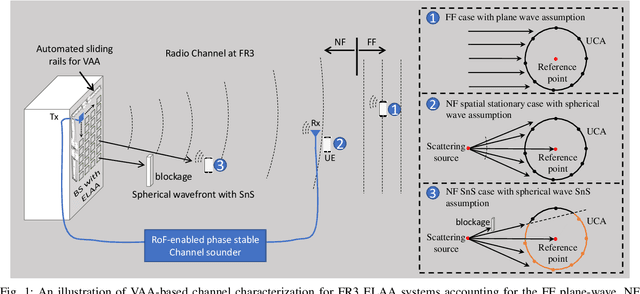
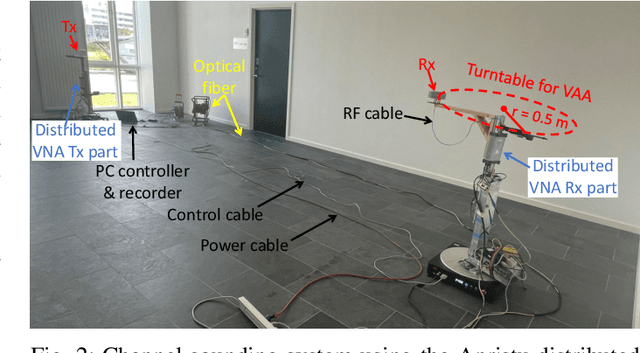
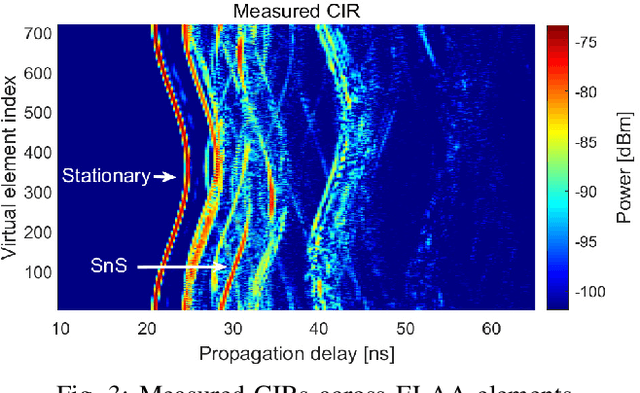
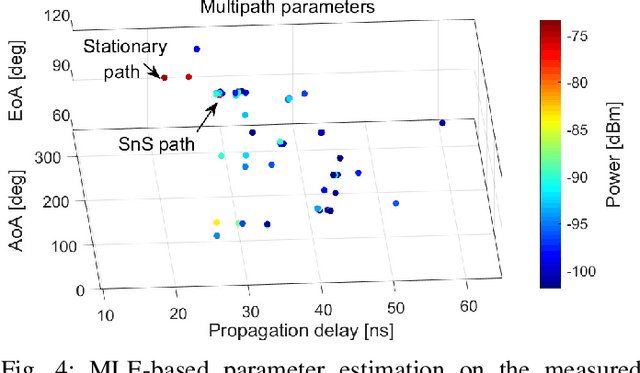
Abstract:6G communication will greatly benefit from using extremely large-scale antenna arrays (ELAAs) and new mid-band spectrums (7-24 GHz). These techniques require a thorough exploration of the challenges and potentials of the associated near-field (NF) phenomena. It is crucial to develop accurate NF channel models that include spherical wave propagation and spatial non-stationarity (SnS). However, channel measurement campaigns for mid-band ELAA systems have rarely been reported in the state-of-the-art. To this end, this work develops a channel sounder dedicated to mid-band ELAA systems based on a distributed modular vector network analyzer incorporating radio-over-fiber (RoF), phase compensation, and virtual antenna array schemes. This novel channel-sounding testbed based on off-the-shelf VNA has the potential to enable large-scale experimentation due to its generic and easy-accessible nature. The main challenges and solutions for developing NF channel models for mid-band ELAA systems are discussed, including channel sounders, multipath parameter estimation algorithms, and channel modeling frameworks. Besides, the study reports a measurement campaign in an indoor scenario using a 720-element virtual uniform circular array ELAA operating at {16-20} GHz, highlighting the presence of spherical wavefronts and spatial non-stationary effects. The effectiveness of the proposed near-field channel parameter estimator and channel modeling framework is also demonstrated using the measurement data.
Experimental Study of Spatial Statistics for Ultra-Reliable Communications
Feb 17, 2024



Abstract:This paper presents an experimental validation for prediction of rare fading events using channel distribution information (CDI) maps that predict channel statistics from measurements acquired at surrounding locations using spatial interpolation. Using experimental channel measurements from 127 locations, we demonstrate the use case of providing statistical guarantees for rate selection in ultra-reliable low-latency communication (URLLC) using CDI maps. By using only the user location and the estimated map, we are able to meet the desired outage probability with a probability between 93.6-95.6% targeting 95%. On the other hand, a model-based baseline scheme that assumes Rayleigh fading meets the target outage requirement with a probability of 77.2%. The results demonstrate the practical relevance of CDI maps for resource allocation in URLLC.
Omni-directional Pathloss Measurement Based on Virtual Antenna Array with Directional Antennas
Aug 07, 2022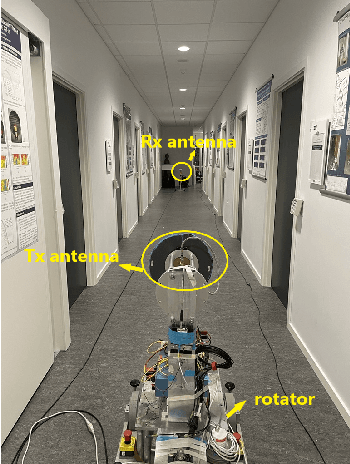
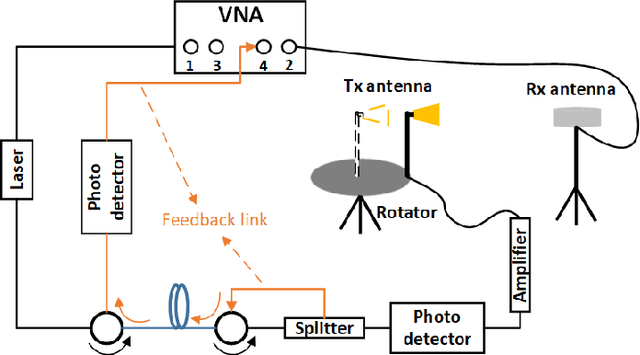

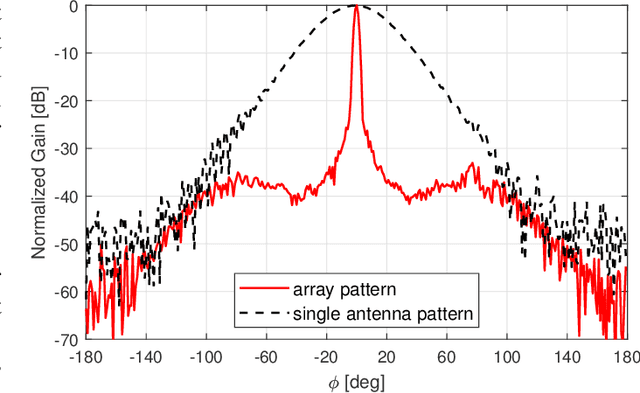
Abstract:Omni-directional pathloss, which refers to the pathloss when omni-directional antennas are used at the link ends, are essential for system design and evaluation. In the millimeter-wave (mm-Wave) and beyond bands, high gain directional antennas are widely used for channel measurements due to the significant signal attenuation. Conventional methods for omni-directional pathloss estimation are based on directional scanning sounding (DSS) system, i.e., a single directional antenna placed at the center of a rotator capturing signals from different rotation angles. The omni-directional pathloss is obtained by either summing up all the powers above the noise level or just summing up the powers of detected propagation paths. However, both methods are problematic with relatively wide main beams and high side-lobes provided by the directional antennas. In this letter, directional antenna based virtual antenna array (VAA) system is implemented for omni-directional pathloss estimation. The VAA scheme uses the same measurement system as the DSS, yet it offers high angular resolution (i.e. narrow main beam) and low side-lobes, which is essential for achieving accurate multipath detection in the power angular delay profiles (PADPs) and thereby obtaining accurate omni-directional pathloss. A measurement campaign was designed and conducted in an indoor corridor at 28-30 GHz to verify the effectiveness of the proposed method.
 Add to Chrome
Add to Chrome Add to Firefox
Add to Firefox Add to Edge
Add to Edge